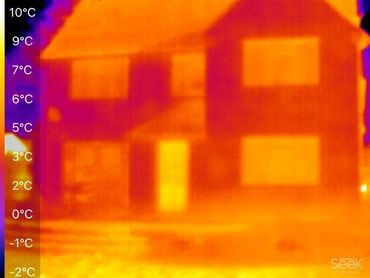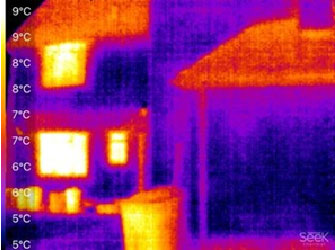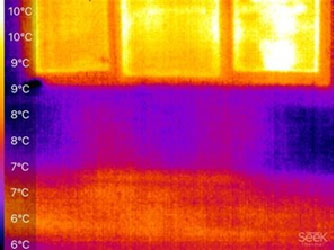Thermal imaging is the technique of enlightening the visibility of substances in a dark environment by distinguishing the objects’ infrared radiation and generating an image based on that data.
Thermal imaging is the most frequently used night vision technology and works in surroundings without any ambient light and can penetrate obscurants such as smoke, fog and haze.
All objects emit infrared energy (heat) as a function of their temperature. The infrared energy emitted by an object is known as its heat signature. In general, the hotter an object is, the more radiation it appears. A thermal imaging camera is essentially a heat sensor that is capable of sensing minute variances in temperature. The device collects the infrared radiation from objects in the scene and generates an electronic image based on information about the temperature differences. Because objects are rarely precisely the same temperature as other objects around them, a thermal camera can detect them and they will seem distinct in a thermal image.
Thermal images are normally greyscale in nature: black objects are cold, white objects are hot and the depth of grey designates differences between the two. Some thermal cameras, however, add colour to images to help users identify substances at different temperatures.


WHAT OUR CLIENTS SAY
Thermal imaging cameras are becoming a common instrument in the home inspection industry. They are being used to corroborate building performance to specifications, determine insulation condition, locate leaks, verify structure design and locate moisture intrusion. These are not the only thermal imaging camera applications as their use is only limited by the imagination of the user. Primarily, thermal imaging cameras are used where the identification of thermal patterns can be used to find something or diagnose a condition, such as poor insulation in a home or an overloaded electrical circuit.
There are many instances where thermal imaging camera applications can be used, including:
- Substation electrical inspections;
- Thermal heat loss inspections of buildings;
- Locate radiant heating wires or pipes;
- Locate potential areas for mold growth;
- Flat-roof leak detection for buildings;
- Detect thermal patterns on boiler tubes;
- Mechanical bearing inspections; and
- Detect insulation leaks in refrigeration equipment
There are optimum conditions for carrying out these surveys when temperatures provide a more successful survey. To discuss options and arrange for one of our surveyors to visit, please call to arrange an appointment.
